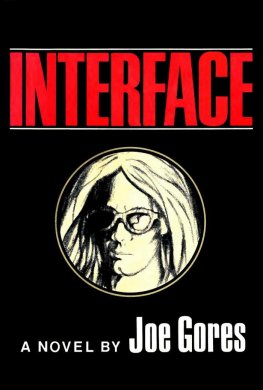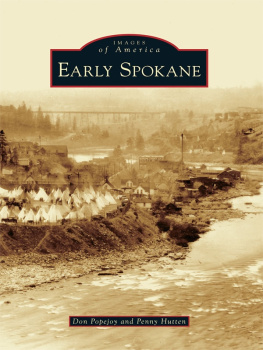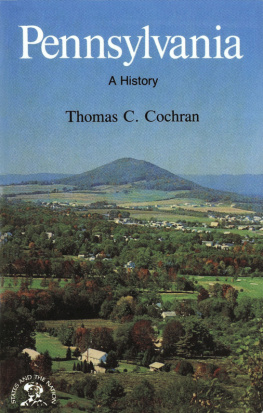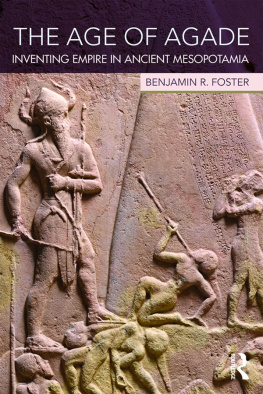Burtyrki Books 2020, all rights reserved. No part of this publication may be reproduced, stored in a retrieval system or transmitted by any means, electrical, mechanical or otherwise without the written permission of the copyright holder.
Publishers Note
Although in most cases we have retained the Authors original spelling and grammar to authentically reproduce the work of the Author and the original intent of such material, some additional notes and clarifications have been added for the modern readers benefit.
We have also made every effort to include all maps and illustrations of the original edition the limitations of formatting do not allow of including larger maps, we will upload as many of these maps as possible.
Spokane Story
A Colorful Early History of the Capital City of the Inland Empire
by
LUCILE F. FARGO
TABLE OF CONTENTS
Contents
TABLE OF CONTENTS
REQUEST FROM THE PUBLISHER
MAP
FOREWORD
REQUESTS coming to the author to write a book picturing the life and culture of Spokane during successive phases of its development from fur trade days to the attainment of municipal adulthood in the early years of the twentieth century posed a difficult problem. Such a book could be neither straight history nor fiction. It must stand somewhere between. How could that be done?
The best answer seemed to be to make the approach for the most part through characteristic people; not necessarily those best known to fame outside the immediate locality, nor even those whose influence was most salutary. Rather, people picked here and there because of their indigenous quality; folks through whose ways of life and local activities the reader might get the flavor of the community and, in common parlance, learn how it got that way.
Some readers will undoubtedly challenge the selection of characters. To such the reply must be either that these were individuals who seemed most likely to provide a balanced picture or whose activities have become a part of local lore. Several have already been made the subjects of well-documented published biographies, and in the case of one, the author herself has prepared a comprehensive biography yet to be published. It is from such sources that not a few pertinent facts and incidents informally set forth in the following pages have been drawn. To the biographers the author wishes to express here, as well as more explicitly in the pages that follow, both gratitude and a deep sense of obligation. She is also indebted to numbers of brief and less well-known sources such as pioneer reminiscences and diaries, city and county histories, commercial pamphlets, and informative articles found in the Washington Historical Quarterly (now the Pacific Northwest Quarterly), the Oregon Historical Quarterly , and related publications. Among newspapers largely drawn upon are The Spokesman-Review, The Spokane Chronicle, and The Washington Farmer. To the editorial staff of the last particular thanks are due for helpful suggestions. Other items have been contributed orally by friends of the authors seventeen years of residence in Spokane, and by their friends to whom she was kindly directed and by whom she was without exception graciously received.
Thanks are also due the Spokane Public Library through whose Northwest Collection the author has been allowed to thumb her laborious way punctuated by calls for help graciously answered by the reference staff. The resources of the Bancroft Library at the University of California in Berkeley have also been used, thanks to the courtesy of that institution.
In the utilization of this rather formidable array of background and source material the author has endeavored to preserve a light touch. She hopes she has been accurate when dealing with facts; but the book is frankly directed toward the reader who is, or may be, interested in the development of the so-called Inland Empire and its capital city, but who lacks inclination, time or opportunity to make his way through the physically as well as rhetorically heavy tomes from which many of the following narratives have been extracted.
The author likes the Inland Empire, its sunshine, its lore and its laughter. She hopes you will too!
LUCILE F. FARGO
Berkeley, California
June, 1957
Illustrations
Fur Trading Post
From Gabriel Franchere, Narrative of a Voyage to the Coast of America
Site of the Old Spokane House Trading Post
Tshimakain as Sketched by a Visitor in 1843
Indian Tepees on Riverside Avenue
Chief Garry as Sketched in 1855
The California House built in 1878
A Small Palouse Town in the Nineties
Steptoe Butte in the Background
First Railway Station, 1883
Indian Encampment
Drawing by F. M. Wilson. From Indian Days of the Long Ago by E. S. Curtis. Copyright by World Book Company
Indians in Front of Spokane Club
An 1889 Interior
From Harry H. Hook and Francis J. McGuire, Spokane Falls Illustrated
First Brick Business Block
Spokane in Ruins after the Great Fire of 1889
Looking North over Monroe Street Bridge
Bank Interior, Late Eighties
From Harry H. Hook and Francis J. McGuire, Spokane Falls Illustrated
Middle Falls of the Spokane River, 1884
The Falls as Sketched in 1888
Views of the Falls of Spokane River, 1881
Early Street Railway Trestle
Horse-drawn Street Car, 1888
Modern Views of Spokane
Spokane Story
1 Big Business on the Little Spokane
ROSS COX was lost. A member of Mr. John Jacob Astors first fur-trading expedition into the Spokane country, the red-headed Irish clerk had lain down, on an August day in 1812, for a noonday nap where a clump of sumach and wild berries by a little stream offered shelter from the broiling summer sun of the northern Palouse. {1} He was fatigued from the long trek overland from the Snake River, and the temptation to rest had been irresistible. Now, in the late afternoon, he woke with a start and looked about in dismay. The brigade had disappeared. Not a sign of it was to be seen anywhere. Cox shouted until he was hoarse, but no answer came. He was alone in an unknown land, without food, hatless, clad only in a gingham shirt, nankeen trousers, and worn moccasins, left behind to find his way as best he could.
There were those who said later that the young Irishmans desertion by the brigade was a planned reprimand for his dilatory ways while on the march and his insubordination when called to account for frequent wanderings to view the scenery. Another explanation was that the party traveled in two sections each of which thought he was with the other. Whatever the reason, there was Cox, hungry, hatless, poorly shod, and worst of all, weaponless, with the late afternoon sun urging haste if he was to overtake the brigade before nightfall. He set off at once.
At first the trail left by horses and men was not hard to follow; but soon it disappeared in rocky ground. Cox climbed a hill and searched the landscape north, east, and westto no avail. The rolling hills concealed all trace of his companions. He was unarmed, and had no means of knowing where to proceed.












